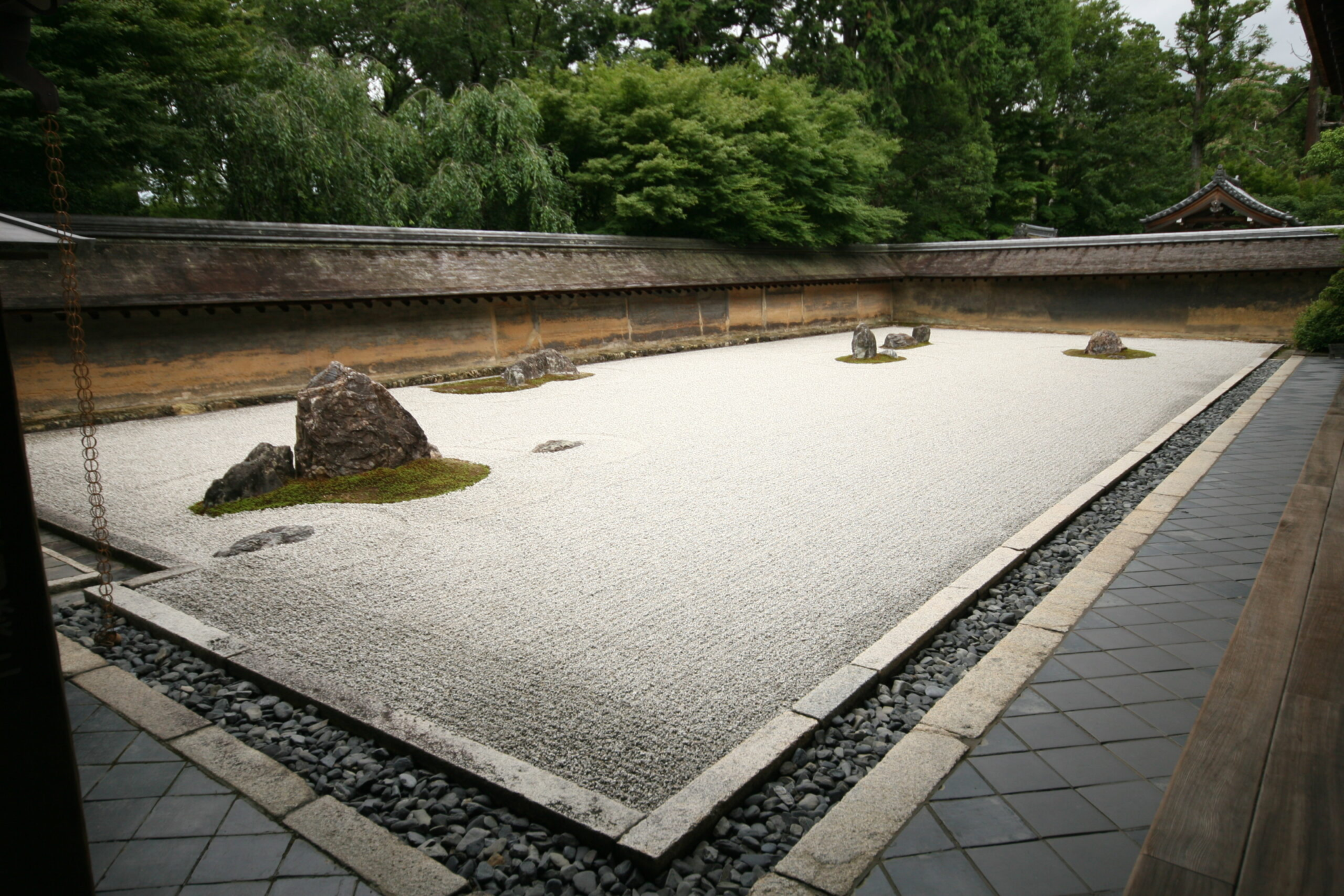日本の東京や京都には沢山の歴史的日本庭園が残されていますが、島根県にも多くあります。特に松江市、出雲市には地域独特の日本庭園が残る地域として知られています。
その日本庭園ですが、見た目が美しくて、見るものを魅了する奥ゆかしさだけでなく、日本庭園のすべてに深い意味が込められています。
中でも特によく使用されているのが砂利です。日本庭園内の砂利の意味するものはいくつかに分かれます。
海や川、雲を意味している
日本庭園の砂利の意味として最も多いのが、海や川を意味している場合です。つまり、水を意味しています。
水の流れを砂利の模様で表したり、上流は荒々しい砂利にして、下流は細かい砂利にしたりと、分かりやすい表現がなされています。
日本庭園には水を使った池泉式の庭園と、水を使わない枯山水の庭園がありますが、水を使わない枯山水には、水を表すために砂利が使用されているのです。
砂利の使い方も巧妙で、荒々しい海の波を表したり、凪の状態を表したりといった、水の表情を砂利を使って上手に表現しています。

写真は瑞峰院庭園ですが、奥の立石は仙人が不老不死の薬草をつくっているという伝説の蓬莱島を意味しています。よって、人が簡単に近寄ることはできないことを意味するために、砂利を大きくうねらせて、荒々しい人の近づけない海を表しています。
また、雲を荒らしている場合もあります。雲の中から山のてっぺんが突き出している様子を意味します。
抽象的世界を意味している
日本庭園は、仏教などの思想の影響が強く表れているものも多くあります。庭というキャンパスの描かれた思想には、砂利を天国やあの世を意味するなど、抽象的世界を表す場合があります。

写真は、大徳寺塔頭龍源院の庭園で、日本で一番小さい石庭と言われています。この庭園の砂利は、丸い波紋が一滴の水が滴り落ちる様子を表現しており、一滴の水が小川となり大河となり、ついには大海となるように、一滴の水の大切さを意味しています。
砂利の意味が思想を表している場合は、一目にしてその意味を知ることは難しですね。
多くは意味を記した説明文が近くにあったり、ガイドが説明してくれたりしますので、質問をして聞いてみるといいでしょう。
見る側の数だけ意味がある
現在では、その意味がハッキリとは分からない庭もたくさんあります。
古い時代に造られた庭は、作者はもちろんおらず、代々受け継いだ施主も、その意味を聞き伝えていない場合は、もはや、本当の意味を知る由もありません。

写真は、京都竜安寺です。15個の石でできた石庭ということで非常に有名な庭園です。しかし、この庭園の意味は100通りもあり、正解はわかりません。
このような庭園は、見る側の数ほど意味があるといってもいいでしょう。心の持ち方によっても違って見える日本庭園の真骨頂ともいうべき庭園ですね。
日本庭園の砂利は、形が自由自在にできることから、様々な表現をするのに最適な存在として非常によく使われています。しかし、その意味は分かりやすいものから、説明を受けないと分からないものまで様々です。
実は、未だにその意味がハッキリしていない庭園も少なくありません。しかし、見る側が自由に意味合いを考えることができるのも日本庭園の奥の深いところです。砂利の意味を考えて楽しんで庭園を鑑賞してみましょう。


